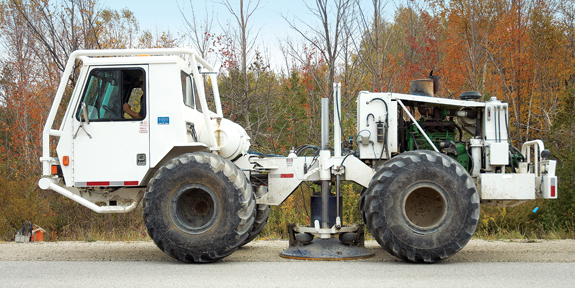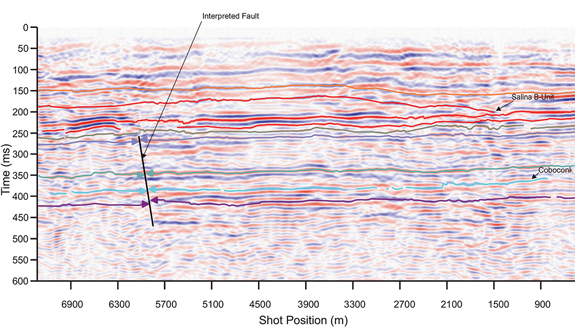2-D seismic surveys in sedimentary rocks
Overview
Between 2012 and 2014, the NWMO used available geoscientific information to begin the process of learning about the geology of potential siting areas containing sedimentary rock formations. These Phase 1 Desktop Studies were used to understand the regional geology and sedimentary sequence in these areas and to identify whether communities had the potential to satisfy the geoscientific site evaluation factors.
For sedimentary rocks, the next phase of preliminary assessments includes a series of geoscientific field studies that may include observing general geological features, borehole drilling, and 2-D seismic surveys. Field studies will be conducted to advance understanding of the general geology in each community. The scope, location and timing of these studies will be developed in collaboration with communities.
Resources:
2-D seismic surveys
The technique uses sound waves that travel through the ground and are reflected at boundaries between rock layers. A vibroseis truck is used to transmit vibrations into the ground. The vibrations are generated by a vibrating plate that is lowered from underneath the truck and pressed against the ground surface.

Seismic recording devices known as geophones are placed on the ground and connected through a cable. They measure the magnitude and travel time of the vibrations reflected from underneath the surface. The output is a two-dimensional profile of the subsurface showing boundaries of different rock layers and potential locations of any subsurface structure and faults.

Impact of vibrations
Access requirements and distance from nearby structures
Duration
Permitting
Planning for future studies
Additional information:
